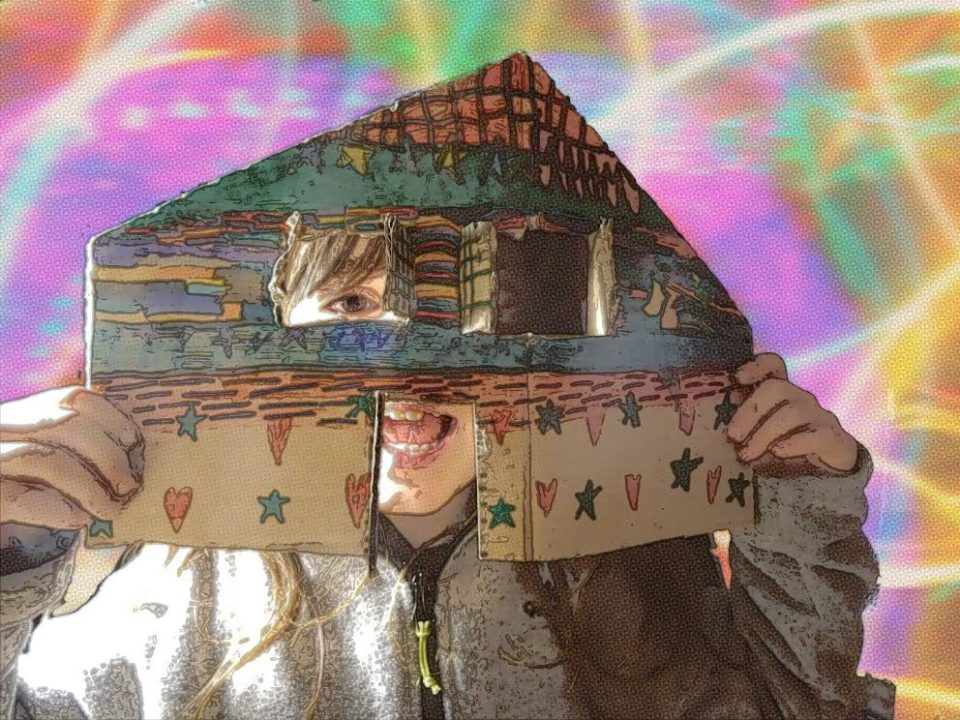It will be housed in Forlì in early June during the Festival Ipercorpo the final outcome of performing Lab for kids from 8 to 16 Renzo years Francabandera held in the town of Romagna.
KIDS’ HOUSES is to practice everyday experience of art on the theme of
Lab Days 27 e 28 April – 18 e 19, 25 e 26 May
Return 30 May – 2 June
«The art does not solve problems but makes us aware of their existence»
Magdalena Abakanowicz (sculptress)

There are many studies on the benefits of psychosocial interventions broadly on children living in environments with greater likelihood of discomfort.
These beneficial impact on psychological functioning, on coping strategies, on the meaning of "hope", and social support. Going beyond the specific analysis of factors such as age, kind, where you live, infants who receive interventions related to the creative stimulus show an ability to react to greater difficulty.
"Arts education enables children from a financially challenging environment to obtain equal terms with children who have the ability to make those experiences enrichment thanks to the means of his family ', dice Eric Cooper, president and founder of the National Urban Alliance for Effective Education.
The art and creativity play an important role in the education of children. They help to stimulate thought, develop the potential, feed the intellectual growth and the ability to solve problems independently and innovatively. During the creative process, indeed, art is not seen as mere external beauty but rather spiritual, such as auto-discovery of oneself and then learning. One way to learn and get involved. The art creates concrete objects through the most hidden thoughts, hidden, those who can not easily collide with reality.
The importance of the theme of the house, in all studies on children, It makes it the symbolic place of safety, the representation of himself and of his family context.
A report by the 2005 fromRand Corporation about Visual Arts argues that art "it can not make contact people to deeper levels and make them willing to experiment with new ways of seeing things'.
The teaching of artistic practice and creative, especially if it fed into the everyday, It is closely related to what we want for our youth: development of interpersonal and emotional faculties, Most academic performance and civic engagement, development of equal opportunities.They have demonstrated numerous neuroscientific studies and cognitive psychology.
The contact with the artistic practice involves, from childhood, improvements in the development of cognitive abilities, critical thinking and verbal skills; improves motivation, concentration, confidence and positive influence on the ability to work in teams.
We want every child involved in the project, working alone and in groups, can not achieve the dream of a cottage, but a high house, great, in which enter with adults, and where is its identity. A house that then develop an urban thought on the relationship with the other houses, on common needs, about what you can do yourself and what it is useful to do together.
Art and creativity are key in the development and everyday because the baby increase the ability to create their concepts, to solve problems in a different way and innovative, to learn and connect with others.
We want to create an experience that will last a month, focused around the work in 3 weekend with 10 hours each for a total of 30 hours of work and meeting with these young people, where children of Aler residential areas can create the basis for a practical invention that would have them everyday even beyond the laboratory days.
The invention is just based on the concept of discovery. Here then the activity, based on semiotic theories of contemporary, try to provide elements to build an artistic practice based on what you can find in the everyday.
Simple objects, voices, sounds, experiences, where children learn to give an abstract dignity, artistic, recognizing the emotional value of their creation.
The practice for teenage boys may also include the use of small technology, to introduce them to a conscious and creative use of the same, and non-stereotypical and dependent.
Then We will help children realize their village of cardboard houses large, houses "series", not improvised, well made and built houses according to their projects, curate, can accommodate some children but also adults, perhaps with some digital magic made and designed together with children, with their concept of the future home automation, things that we adults might not even come to think, but they will tell us when we take you around in their village.
The result of this practice will condense in some installations in the respective residential complexes in the first place, and then, assembled in late May and early June in a single conceptual corpus in the opening of the Festival Ipercorpo, devised by the children themselves, to compose a large installation housed in the former ATR Forli deposit, telling 4 weeks of meeting with the poetry of everyday life.
The team is based on the experience of two leading figures of the art digital and performative in Italy, that will Francabandera joined to the digital artist Michele Cremaschi and longlife learning expert Jennifer Mastroianni